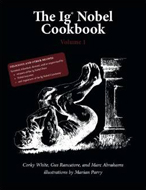
Get All Wound Up
How design engineers can save the world
[NOTE: this article first appeared in early 1999. As a result of it, two wind-up toy clinics have been held, thanks to Design News and to generous support from W.M. Berg.]
Do you have a broken wind-up toy? Or do you have the ability to bend, twist, screw, glue, and solder new life into a broken wind-up toy? Then come to the Design News Millennial Wind-Up Toy Revival and Engineering Mini-Festival. We will practice and promote the principles of the twin saints, Rube Goldberg and Leonardo da Vinci. We will get the 21st century off to a proper start. For in a very basic way, the 20th century is ending badly...
The Problem
You know what happened. Once electrical batteries became cheap and plentiful, things went to hell. Too many engineers got lazy. They forsaked, or perhaps forsook, the cleverness, the ingenuity, the delighted puzzle-solving talents for translating a coiled spring into a complex motion. They became incapable of making and appreciating art at the highest level mankind has known: the bobbing, whirling, spinning, jerking, stretching, twisting majesty of the well-made wind-up toy.
Electricity has been nearly the death of mankind's ancient craving for elegant, pointless machines. A battery-driven hopping bunny may be able to jump moronically for hours or days, but dammit, it's got no spring to its step. It's a lazy designer who must rely on a flood of electrical power. Whatever the task, a good engineer, a competent engineer, a self-respecting engineer, can make a single spring-load of power suffice. And from necessity comes great design. Had there been electric motors lo those many years ago, Rome might have been built in a day, but would it have been so splendid?
And electricity is just the half of it. Plastic is the other half. Plastic is a wonderful material (well, a wonderful range of materials). However, its versatility somehow tempted a small group of perverted, lazy designers to design rotten, cheapo windup toys. Given a stupendously shapable material to use, these criminals put much care into the surface appearance of their designs, but very little into the structural basics. The results are predictably appalling. The working parts don't work for long. The toys break prematurely and improperly -- that is, in ways that make them difficult to repair. After breaking, their original strength cannot be restored. It is sad, very sad.
The Solution
The next generation of engineers needs inspiration. It needs clear exemplars of imagination and good design. It needs heroes. What it needs, in other words is good wind-up toys. And a good look at good people repairing broken wind-up toys, bringing them back to whirring, zizzing, kerchunk-kerchunk-kerchunking life.
So that's what will be happening. Come to the Design News booth at the National Design Engineering Show. We'll supply the tools and spare parts (but bring your own, if you like!), and lots of free coffee and junk food. If you have broken wind-up toys, bring them. We need people to do the repairing, and we need kibitzers. Whether you repair or just toss in good advice, you'll be an inspiration to the children and engineers of the 21st century. And if you're skillful, or if you're lucky, or if you're just plain there, you might win yourself a new wind-up toy, and the huzzahs of thousands.
© Copyright 1999, 2000 Marc Abrahams
This article is adapted from the regular
column Marc used
to write for Design News magazine. For a
complete list of HotAIR
features, see What's
New.






